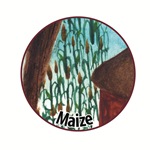Marker-assisted backcrossing for improving phosphorus-use efficiency and tolerance to aluminium toxicity via Pup1 and AltSB genes in maize (G7010.03.05)
| Target country |
Kenya |
| Lead institute |
Moi University/Kenya Agricultural Research Institute (KARI) |
| Partners |
|
Phosphorus (P) deficiency and aluminium (Al) toxicity are two of the most important constraints responsible for low maize productivity on acid soils worldwide, and particularly in Africa where because of resource limitations low input agriculture is the norm
This project will use molecular breeding approaches as well as conventional breeding to speed up development of maize varieties adapted to the acid soils of Africa. The research proposed here is closely connected to the other two maize projects on comparative genomics, and should result in significant improvements in maize yields on acid soils in Kenya and other African countries, as well as in Brazil.
Objectives
- Screening of Kenyan maize germplasm for Al tolerance in nutrient solution, for ZmMATE gene expression, and for P efficiency in the field
- Development of maize topcrosses for assessing yield performance under acid soil conditions in Kenya
- Evaluation of Kenyan maize topcrosses, synthetics and hybrids for Al tolerance and P efficiency in the field
- Marker-assisted selection for genes/QTLs to improve Al tolerance and P-use efficiency in locally adapted maize germplasm
- Develop mapping populations using the highly aluminium-tolerant Kenyan sources, 203B, K4 and/or CON 5
- Training and capacity building
